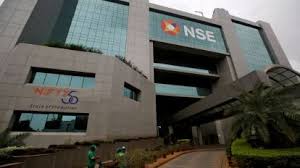HDB Financial Services stock surges over 4%; market cap crosses Rs 72400 crore

Mumbai, July 3, 2025 — HDB Financial Services, a leading non-banking financial company (NBFC) under the HDFC group umbrella, witnessed a strong surge in its stock price on Thursday. The share price jumped over 4% in morning trade, pushing the company’s total market capitalization past ₹72,400 crore—a key milestone in its early post-IPO performance.
Strong Second-Day Rally Follows Solid Debut
HDB Financial made its stock market debut on July 2, 2025, listing at ₹835 per share on the NSE and BSE—delivering a 12.8% premium over its IPO price of ₹740. On its first day, the stock touched an intraday high of ₹845.75 before closing at ₹840.90. Investors and analysts watched the listing closely, given the company’s parentage and its position within India’s high-growth NBFC sector.
On Day 2, the rally continued, with shares rising over 4% by mid-morning and trading near ₹876. This sharp upward movement indicates sustained investor enthusiasm and reinforces confidence in the company’s growth outlook.
Market Cap Breaches ₹72,400 Crore
As a result of Thursday’s rally, HDB Financial’s market capitalization breached the ₹72,400 crore mark. This puts the company among the top non-banking financial institutions in India, in terms of market value—alongside names like Bajaj Finance, Shriram Finance, and LIC Housing Finance.
Such a valuation speaks volumes about investor expectations surrounding the company’s future. Analysts cite HDB’s robust business model, strong parentage, and diversified loan portfolio as key factors contributing to this premium valuation.
What Makes HDB Financial Stand Out?
Founded in 2007, HDB Financial Services is a wholly-owned subsidiary of HDFC Bank. The company focuses on providing retail and commercial loans, including personal loans, auto loans, gold loans, and enterprise financing to micro, small, and medium enterprises (MSMEs).
As of March 2025, the company reported an asset under management (AUM) base of ₹68,000 crore, with a non-performing asset (NPA) ratio well below the industry average. This reflects both strong credit discipline and effective risk management—a combination that appeals to long-term investors.
Further, HDB’s pan-India presence through over 1,400 branches has allowed it to expand into semi-urban and rural markets—targeting underserved populations while maintaining asset quality.
IPO Attracted Robust Demand
HDB Financial’s IPO was met with strong demand across investor categories. The issue was subscribed nearly 17 times, with the Qualified Institutional Buyer (QIB) portion being oversubscribed 55 times. Retail and high-net-worth individual (HNI) interest was equally enthusiastic.
Market experts believe the IPO success was fueled not just by the company’s performance, but also by the trust investors place in the HDFC brand. The positive listing and post-listing rally reflect continued momentum and belief in HDB’s long-term trajectory.
Analysts Maintain Bullish Outlook
Several brokerages have initiated coverage of HDB Financial with bullish recommendations. Emkay Global, for instance, has given a “Buy” rating on the stock with a 12-month target price of ₹900. According to the brokerage, the stock offers a compelling investment opportunity due to:
- A diversified lending portfolio with low sectoral concentration
- Access to low-cost capital through HDFC Bank support
- Potential for net interest margin (NIM) expansion as the cost of funds declines
- Strong management track record and technological adoption
Motilal Oswal and Axis Securities have echoed similar sentiments, suggesting that investors should consider any correction below ₹835 as an attractive entry point.
Strategic Advantages from HDFC Parentage
Being a subsidiary of HDFC Bank gives HDB several competitive advantages, including:
- Access to Data and Infrastructure: HDB benefits from the bank’s digital infrastructure and customer intelligence systems, improving underwriting and credit appraisal processes.
- Lower Cost of Funds: HDFC Bank’s strong credit rating allows HDB to raise funds at lower rates than many of its peers.
- Trust Factor: The HDFC brand commands significant trust among both retail and institutional investors, which aids in customer acquisition and investor sentiment.
What Lies Ahead?
Looking forward, analysts expect HDB Financial to focus on deepening its presence in Tier-2 and Tier-3 cities while continuing to grow its MSME and retail loan books. With India’s consumption-driven economy rebounding post-pandemic and digital lending platforms gaining ground, NBFCs like HDB are well-positioned to capitalize on new credit demand.
Title Page Separator Site title
The key risks include regulatory tightening, rising competition in the retail lending segment, and any deterioration in asset quality due to macroeconomic volatility. However, the company’s conservative lending approach and operational efficiency offer a cushion against these challenges.
Final Thoughts
HDB Financial Services’ strong listing, backed by solid fundamentals and a reputed parent, has clearly struck the right chord with investors. The surge of over 4% in its second trading session and a market cap breaching ₹72,400 crore underscore the market’s faith in the company’s future.
As one of India’s most anticipated financial IPOs in recent years, HDB Financial has started its journey on a high note. For long-term investors seeking exposure to India’s retail credit story with the added assurance of brand HDFC, HDB Financial might just be the right pick.






